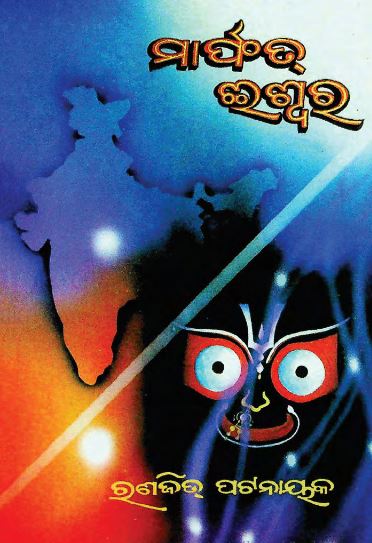Marphat Iswar, an innovative Odia drama penned by Ranjit Patnaik and published in 2003, stands as a distinctive work within regional literature. This sub-drama artfully blends mythological motifs with contemporary challenges, creating an experience that speaks both to the soul and to societal consciousness. The work navigates the realms of the divine and the human, as its narrative unfolds along the delicate border between traditional spirituality and modern existential inquiry.
The drama centers on the quest for meaning and self-realization in a world where the past and present intersect. Its characters—each representing diverse facets of human desire, confusion, and hope—are not confined merely to their individual fates but serve as conduits for broader philosophical and cultural reflections. Marphat Iswar employs a rich tapestry of symbolism, where everyday experiences are elevated through allegorical representations of the eternal. The characters’ journeys are intertwined with myth, echoing the age-old struggle to understand the presence of a higher power amidst worldly limitations.
Integral to the drama’s impact is its language. Patnaik makes creative use of the Odia vernacular, infusing traditional idiomatic expressions with a modern narrative flow. This synthesis of language ensures that the work remains rooted in its cultural heritage while also appealing to a diverse audience that spans generations. The dialogues are carefully crafted, each word carrying weight as it reveals the internal conflicts and philosophical musings of the characters. The result is a linguistic delicacy that brings the sub-drama alive on stage, engaging the audience both emotionally and intellectually.
Moreover, the work is a commentary on the cyclical nature of existence and the interplay between destiny and free will. Through a series of symbolic scenes and carefully structured monologues, Patnaik invites his readers and theater-goers to question accepted norms. His deliberate use of allegory critiques rigid societal frameworks that often constrain individual identity and spiritual freedom. There is an inherent tension in the narrative—a balance between the timeless pull of myth and the relentless progression of modern life. Patnaik challenges his audience to consider that the dichotomy between the sacred and the profane is only apparent, for both realms are in constant dialogue with one another.
Marphat Iswar also shines in its exploration of human emotions—love, despair, hope, and redemption are rendered with an unflinching honesty. Each scene is an invitation to introspection, where the audience is encouraged to reflect on their personal experiences. The emotional landscape is vast and vivid, making the drama resonate on a deeply personal level with those who see their own struggles mirrored in its narrative fabric.
In summary, Marphat Iswar by Ranjit Patnaik is more than a mere play; it is a transformative exploration of the human spirit in conversation with the divine. Its unique blend of traditional myth and modern sensibility makes it a significant contribution to Odia drama. By interweaving cultural heritage with universal themes, this sub-drama continues to inspire and provoke thought among its audience, leaving a lasting imprint on the landscape of contemporary Indian theater.
Books Info
| Books name | Marphat Iswar |
| Author | Ranjit Patnaik |
| No Of pages | 73 |
| Publisher | Orissa Book Store |
| Publication | 2003 |
| Printed At | Guruprasanna Press |
| Distributor | NA |

